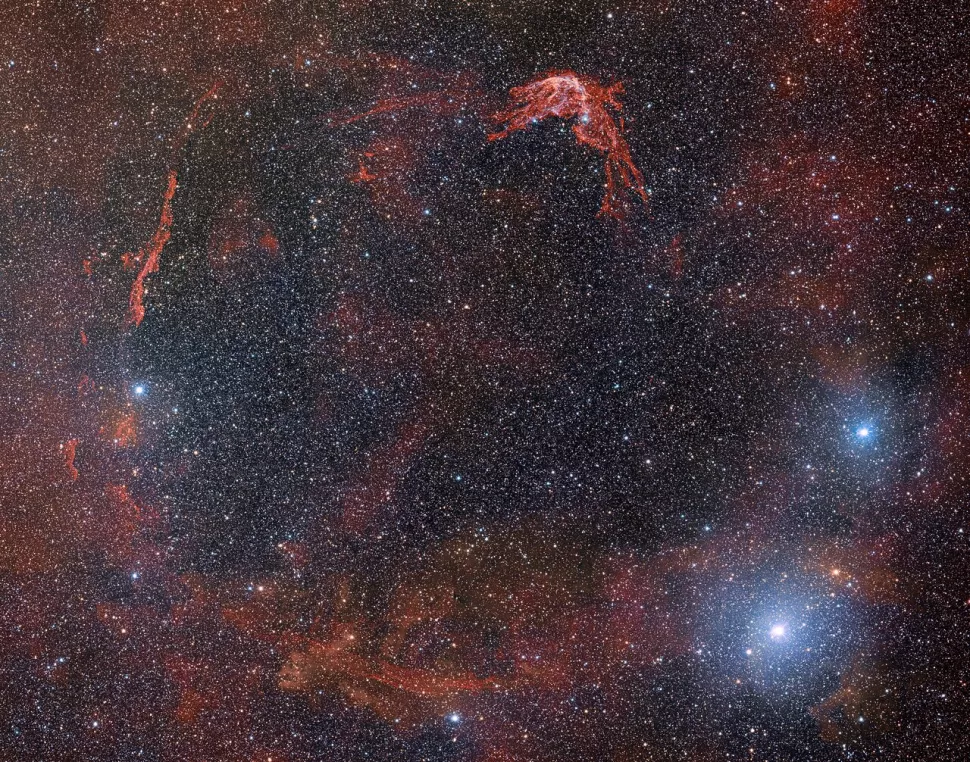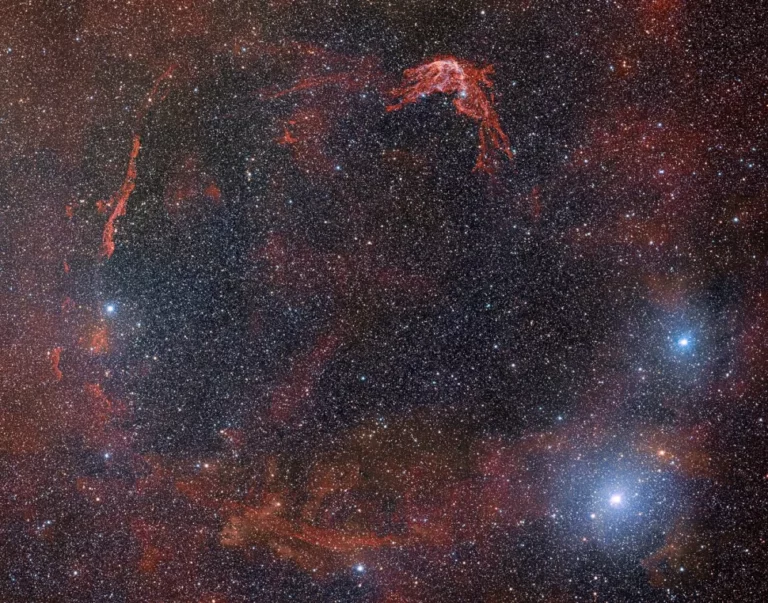Oldest Known Supernova, Dating Back to Year 185, Captured in Rare Glimpse by Astronomers
In the year 185 A.D. Chinese astronomers witnessed a temporary ‘guest star’ emerge in the sky.
Unprecedented Detail: Remnants of Ancient Supernova Explosion Revealed in New Image from Dark Energy Camera
The Dark Energy Camera, designed to study dark matter, has captured a new image that unveils remnants of an ancient supernova explosion in remarkable detail. The image, taken by the camera mounted on the National Science Foundation’s (NSF) Víctor M. Blanco 13.2-foot (4 meters) Telescope at the Cerro Tololo Inter-American Observatory in Chile, displays dust and gas tendrils dispersed around the central point of the supernova.

The torn pieces encompass an area larger than the apparent size of the full moon situated between the constellations Circinus and Centaurus in the southern sky. Astronomers refer to the peculiar cloud as object RCW 86, and it’s believed to be the material from a star that exploded more than 1,800 years ago with such force that ancient Chinese astronomers and chroniclers took notice.
The supernova that occurred in 185 A.D. was referred to as the “quest star” by ancient Chinese astronomers due to its transient nature. The event, now officially known as SN 185, was visible for eight months before disappearing. Astronomers have since discovered that the supernova was located 8,000 light-years away in the direction where Alpha Centauri, the sun’s closest stellar sibling, is located.
The Dark Energy Camera’s exceptional ability to capture a large portion of the sky with fine detail provided astronomers with a “rare view of the entire supernova remnant as it is seen today,” according to the NSF NOIRLab, which published the image on March 1. Scientists hope that this new and detailed view of the object will assist them in uncovering the complicated physics that led to the explosion.
For a long time, the size of the shell led scientists to believe that RCW 86 was too big to have been created by the SN 185 supernova, but it is now agreed among astronomers that it is a residue of the event.
Previous estimates from studies predicted that it would take 10,000 years for the material to disperse to such distances from the dead star. However, in 2006, astronomers found proof that the shell evolved at a much faster rate than initially believed. The Spitzer Space Telescope from NASA ultimately detected high levels of iron in the substance, which prompted astronomers to conclude that the RCW 86 explosion must have been a supernova of the most energetic kind known, one that occurs when a white dwarf star, the dense remains of a star similar to the sun, consumes an orbiting companion. These kinds of supernovae, referred to as Type Ia supernovae, emit so much light that the event would be noticeable even in the distant past when astronomers were limited to naked eye observations.
“These supernovae are the brightest of all and no doubt SN 185 would have awed observers while it shone brightly in the night sky,” researchers wrote in the statement.
Do not forget to share your opinion with us to provide you with the best posts !




0 Comments